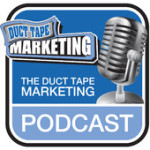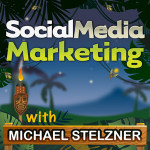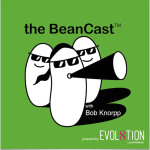Whether you are seeking a new career in marketing or want to move up in your current position, ongoing education is one of the greatest advantages you can give yourself. The ability to know in advance what new trends will drive your industry, what skills your potential employers are looking for, and what kind of messaging your future audience will best respond to.
In the last decade, marketing has evolved dramatically. While a number of things have remained relatively constant – people are still driven by the same needs and desires – the methods by which we connect with them has changed drastically. That’s why it’s so important to understand the kind of divide between what you read in your marketing textbooks and what you’ll be working with in a live working environment.
Below are five of the ways that marketing has changed the most in a largely digital economy
1. Audiences Are Better Informed Than Ever Before
Marketing departments learned quickly after the rise of the Internet-economy in the late 1990’s that information is no longer the easily controlled commodity it once was.
Everyone buying anything does their research. Whether it’s a consumer explaining how many megapixels he wants in his next camera or a patient outlining how WebMD helped him self-diagnose a rare tropical disease, professionals are forced to contend with the wealth of information online like never before.
Simply out-explaining someone will never work. Instead you need to earn their trust and show that you are WORTH listening to.
2. Messages Must Be Earned Not Bought
Which is where number two comes in. In the past, you could earn trust through pure recognition. People trust things they are familiar with and so if they saw forty-five Coca Cola ads a day, they would trust it as a better tasting brand than the generic competitors.
Today, because consumers are better informed and see something north of 300 individual ad messages every day, you can’t buy their trust. You have to earn it, and this is done through providing valuable, actionable information or content to them in your marketing campaigns. Free eBooks, video courses, downloads, and blog posts – the stuff that makes people want to learn more from a brand is what will earn that trust.
3. Competition is Lighter, Faster, and More Creative
Major corporations can’t buy their way to the top of every search listing and every marketing channel as easily as they can offline. Online, a little guy can have a clever idea, release it into the wild and watch it go viral in a way that can’t be matched offline
That injectability is unique to the digital economy, and it makes for some of the most unique and entertaining marketing campaigns ever created. It also makes it a more competitive field than ever before.
4. Segmentation Has Reached an All Time High
When magazines and newspapers were the pinnacle of broadcast messaging, ads were matched to demographics on a very wide basis. Car companies would sell their sleekest, fanciest cars in the business section and golf magazines because probably their target demographic was among the readers.
That hasn’t changed, but we can dig a LOT deeper online. Facebook advertising, Google’s Adwords PPC platform, keyword targeting, and dozens of other tools you can use to break down your audience online lead to ultra-targeting that strips away the unwanted viewers and focuses only on those who are likely to buy from you.
5. Creativity Drives Innovation In Unexpected Ways
Finally, there is the sheer breadth of options that a digital environment creates. The Internet is a sandbox with unlimited resources and tools that allows marketeers to create things that no one has ever seen before. Viral video campaigns, interactive campaign websites, massive information repositories – these are tools that would have been nearly impossible offline, at least at that kind of scale.
Online your imagination is the limit. For a prospective candidate to a marketing position that’s a very good thing. Your ability to show creativity in past projects and future endeavors will help you stand out in a way that, while always important, wasn’t always as visible in the past.
Digital tools haven’t changed what marketing is or what it can do but it has changed how we interact with our audiences, the budgets for large campaigns, and the turnaround time on something as simple as a product announcement. Gone are the days of the multi-million dollar year-long preparation for a single announcement. Things are faster, lighter, sleeker, and more unpredictable than ever, and for someone like, eager to get into the industry, it means more opportunity to stand out from your peers.
About the Author
Featured on websites in more than a dozen countries, Anthony Chatfield has consulted with business leaders, Fortune 500 companies, and entrepreneurs for much of the last decade.
Anthony currently lives in Staten Island, NY and produces marketing and content development training on numerous websites.
For more information, visit his Google+ Page.












